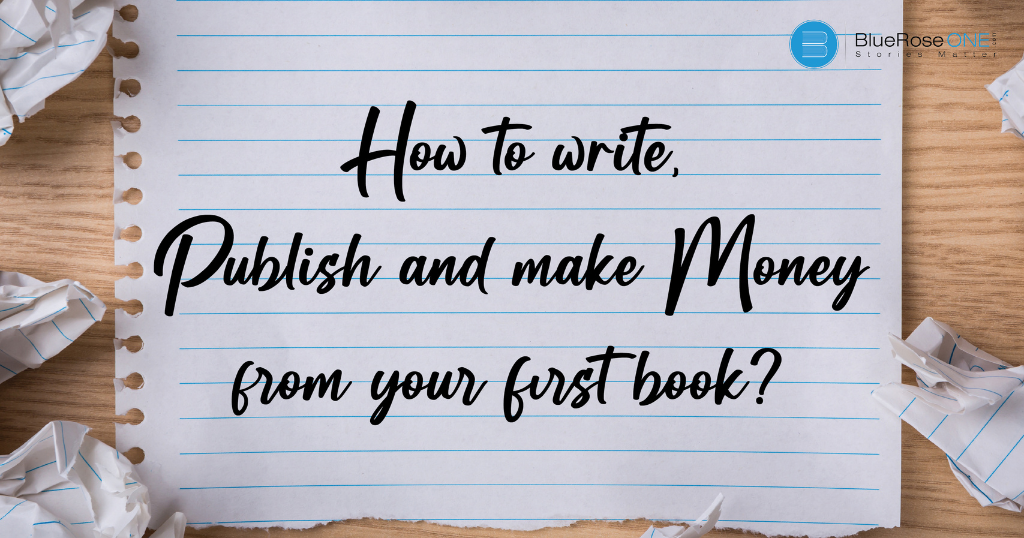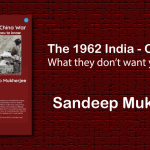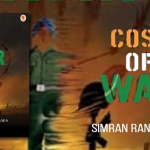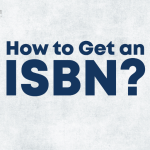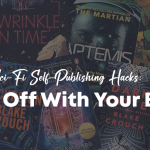Many individuals wish to create and publish a book in the vast universe of creative fantasies. It’s fascinating to think about converting your ideas into something you can handle and maybe even sell. This tutorial is like a road map for anyone trying to write their first book. It will walk you through the writing process, publication specifics, and strategies to transform what you love into something that will bring you joy and maybe some revenue.
Writing a book isn’t just about putting words on paper; it’s about exploring your creativity and discovering more about yourself. This guide is here to support you, giving you tips and encouragement, so your journey from starting to finishing your book is not just satisfying but also helps you reach your dreams.
Embarking on the Writing Journey
Take a meditative pause before beginning to write to find the core of your story. What personal events, feelings, or themes are very meaningful to you? This reflection is the foundation of your distinct voice. J.K. Rowling’s love for subjects such as friendship, courage, and magic, for example, greatly inspired the distinct voice in the Harry Potter series, establishing a connection with readers.
Establish precise goals to define the aim and direction of your writing endeavour. Consider the genre you’re exploring, your intended audience, and the overall message you want to express. For example, if you’re writing a self-help book, you may want to empower and lead a certain demographic towards personal progress. Clear objectives serve as a compass, directing every element of your writing journey.
Making an outline is similar to charting out the landscape before embarking on a journey. Divide your book into chapters or parts to ensure a coherent flow of information. This systematic method assists in preserving coherence and reader interest. Consider George R.R. Martin’s “A Song of Ice and Fire” trilogy; the painstaking structuring of complicated tales and linked character arcs contributes to the epic and immersive nature of the novel.
Consistency is the foundation of good writing. Establish a writing regimen that works with your schedule. Setting realistic word count objectives, like Stephen King’s dedication to 2,000 words each day, encourages a disciplined approach. A regimen not only increases productivity but also breaks down the huge process of producing a book into doable, gradual steps.
You may also like: How to Make Book Design More Appealing to the Reader
Crafting Your Manuscript
Every writer has a distinct voice, but enhancing your book entails experimenting with different writing strategies and styles. Narrative styles, dialogue, and descriptive aspects may all be effective techniques for engaging readers. Consider experimenting with point of view; moving between first and third person can result in unique tones. Effective conversation, like the concise exchanges in Raymond Carver’s short tales, should be realistic and move the story. Descriptive components should generate vivid images without overwhelming the reader, similar to Jhumpa Lahiri’s delicate yet powerful nature descriptions. Finding the correct mix of these qualities improves your voice and draws your audience in.
The first draft marks the inception of your work, but the true artistry lies in the editing and revision process. This stage allows you to refine your manuscript, addressing plot holes, enhancing character development, and fine-tuning language. Seeking feedback from beta readers or joining writing groups provides valuable perspectives. The transformation from a raw draft to a polished manuscript is akin to sculpting—a gradual, deliberate process. For instance, F. Scott Fitzgerald extensively revised “The Great Gatsby,” resulting in a literary masterpiece. Embracing this process turns a promising draft into a professional, compelling final product.
While self-editing is crucial, a professional editor adds an objective and meticulous touch to your work. Their keen eye for detail ensures your manuscript is not only error-free but also polished to industry standards. Hiring a professional editor is an investment in the quality and marketability of your work. For example, J.K. Rowling worked with multiple editors to refine the Harry Potter series, showcasing how collaboration with professionals can elevate a manuscript to a higher standard. Professional editing assistance is a key step towards ensuring your work is ready for the rigorous demands of the publishing process.
Navigating the publishing landscape
The decision between conventional and self-publishing is critical for authors. Traditional publishing is sending manuscripts to literary agencies and established publishing firms in order to gain greater distribution and editorial support. Self-publishing, on the other hand, allows independence but forces writers to oversee every element, from editing to marketing. Consider J.K. Rowling, who experienced rejection before achieving success with traditional publishing, vs Hugh Howey, who earned renown by self-publishing his series “Wool.” Assessing your goals and preferences is essential for understanding the benefits and drawbacks of each option.
Traditional publishing often involves securing a literary agent to act as a liaison between authors and publishing houses. Crafting an effective query letter is essential, showcasing your book’s essence, your credentials, and its market potential in a succinct manner. A well-crafted query letter can be the key to capturing the attention of literary agents. For instance, the query letter for “The Help” by Kathryn Stockett played a crucial role in securing representation, leading to widespread success. Researching agents who specialise in your genre ensures a tailored approach and increases the likelihood of finding the right advocate for your work.
Self-publishing provides authors with the autonomy to control the entire publishing process. Platforms like Amazon Kindle Direct Publishing (KDP) and IngramSpark offer user-friendly interfaces for uploading and distributing books. Understanding these platforms is crucial for making informed decisions on pricing, royalties, and distribution channels. For example, Andy Weir self-published “The Martian” on his website before its success led to a traditional publishing deal and a movie adaptation. Exploring these platforms allows authors to reach a global audience without the gatekeeping of traditional publishing, emphasising the democratisation of the publishing landscape.
Book covers play a pivotal role in attracting readers. Investing in a professional cover designer ensures a visually appealing and genre-appropriate cover, enticing potential readers. Consider the iconic covers of the Harry Potter series, designed by professionals to capture the essence of the stories. Additionally, proper formatting for both print and digital formats is crucial for a polished appearance. Well-formatted books enhance the reading experience and contribute to the overall professionalism of your work. Authors should prioritise these aspects, as they directly impact a book’s marketability and reception in a competitive publishing landscape.
You may also like: The Rise of Self-Publishing and What it Means for Authors
Building Your Author Platform
In the digital age, authors benefit significantly from a dedicated online space. An author’s website acts as a centralised hub where readers and collaborators can learn more about you and your work. Include a well-crafted biography, details about your book, and contact information. For instance, J.K. Rowling’s website provides a comprehensive platform where fans can explore her background, work, and latest updates. A professional website not only showcases your professionalism but also enhances your visibility, making it a crucial component of modern authorship.
Social media networks are effective tools for connecting writers with their target audiences. Engaging with readers, sharing bits of your writing process, and participating in genre-related conversations on platforms such as Twitter, Instagram, and Facebook all contribute to the development of a community around your work. The celebrated novelist Roxane Gay uses Twitter to engage with her followers, offer thoughts, and promote her work. The author-reader connection is humanised through social media participation, which creates a dynamic arena for conversation and promotion.
Author branding goes beyond a book cover; it encompasses your entire online presence. Consistency across your author bio, social media profiles, and promotional materials creates a recognisable and credible brand. Consider the branding of Stephen King, where his distinctive author persona extends to his book covers, website, and even merchandise. A strong author brand helps readers identify your work in a crowded market, building trust and loyalty. Crafting a cohesive and memorable brand is an integral aspect of successful authorship in today’s competitive literary landscape.
Marketing and Promoting Your Book
Before your book hits the shelves, it’s crucial to generate anticipation. Utilise pre-launch strategies to build excitement, such as creating a buzz on social media platforms. Share behind-the-scenes glimpses and teasers, and engage with your audience. Offering pre-order incentives, like exclusive content or signed copies, incentivizes readers to commit early. Connecting with book bloggers for reviews before the official launch date helps spread the word. For example, the anticipation for Michelle Obama’s memoir, “Becoming,” was heightened through a well-executed pre-launch strategy, including teaser videos and media coverage, creating widespread anticipation and ensuring a successful release.
Your book’s launch day is a watershed event. Plan a thorough book launch strategy that goes beyond simply publishing the book. Use both online and outdoor promotional actions to increase exposure. To directly connect with your audience, host virtual or real book events such as readings or Q&A sessions. Use your author platform, which includes your website and social media outlets, to maximise reach during the critical launch time. For example, the launch of Alex Michaelides’ “The Silent Patient” saw a combination of virtual events, media attention, and author participation, all of which led to the book’s successful launch and ongoing popularity.
Positive reviews and testimonials are vital for establishing your book’s credibility and appeal. Solicit reviews from early readers, book bloggers, and literary influencers in your genre. Platforms like Goodreads and Amazon provide spaces for readers to share their opinions, influencing potential buyers. A notable example is the impact of positive reviews on the success of Rupi Kaur’s poetry collection, “Milk and Honey.” Reviews not only contribute to your book’s discoverability but also build trust among potential readers, making them more likely to choose your book based on the positive experiences shared by others.
You may also like: Strategies for Effective Book Recommendations in Publishing

Monetizing Your Book
While book sales are the major source of income, clever writers diversify their revenue streams to improve financial sustainability. Consider generating audiobooks, since the audiobook market continues to develop. J.K. Rowling increased her revenue sources by licencing adaptations, such as the Harry Potter film series. Creating companion items, such as apparel or online courses relating to your book, provides extra earning opportunities. Diversifying income streams not only increases revenue but also provides financial stability in the volatile publishing business landscape.
Effective book pricing is a delicate balance between affordability for readers and fair compensation for the author. Researching similar titles in your genre helps establish a competitive and realistic price. Factors like book length, format, and market demand should inform your pricing strategy. For example, the success of indie author Hugh Howey’s “Wool” series was partly attributed to strategic pricing that attracted readers without compromising profitability. A thoughtful approach to pricing contributes to your book’s accessibility while aligning with your financial goals.
Your writing career extends beyond a single book; building long-term relationships with readers is paramount. Maintain an active online presence through social media, a website, or newsletters. Participate in book clubs or forums related to your genre to engage directly with your audience. Consistently delivering quality content, whether through additional books or online interactions, fosters reader loyalty. Authors like Neil Gaiman have mastered the art of building enduring relationships, ensuring a dedicated readership that eagerly anticipates each new release. Cultivating these connections is essential for sustained success in your writing career.
Navigating Challenges and Staying Motivated
Rejection is an inherent part of a writer’s journey, whether it’s facing agent rejections, unfavourable reviews, or sales challenges. Successful authors view setbacks as opportunities for growth, learning from feedback and using it to refine their craft. J.K. Rowling, for example, faced numerous rejections before finding success with Harry Potter. Resilience and the ability to persevere through adversity are common traits among accomplished authors, demonstrating that setbacks can ultimately lead to greater achievements.
The delicate balance between writing and marketing is a common challenge for authors. Finding a rhythm that aligns with your strengths and preferences is crucial. Some authors excel at continuous marketing efforts, building a sustained online presence. In contrast, others may prefer concentrated promotional periods around book launches. Author Neil Gaiman strikes a balance by engaging with his audience on social media while maintaining focus on his writing. Discovering a personalised approach to balance these demands ensures that you effectively reach your audience without compromising the quality of your writing.
In the ever-changing publishing industry, staying educated and adaptive is critical. Authors should continue their education by visiting writing conferences, engaging in webinars, and networking with other authors. Authors like Margaret Atwood, who welcomes newer platforms, demonstrate the capacity to adapt to new technology, marketing methods, and publishing trends. A willingness to learn and grow not only keeps you competitive in the market, but it also opens doors to new opportunities, which contributes to your long-term success as a writer.
You may also like: Insights from Bestselling Authors: The Art of Storytelling
Conclusion: Your Journey Beyond the First Book
Writing, publishing, and selling your first book is a life-changing event that goes far beyond finishing a manuscript. It symbolises the start of your author journey, opening doors to a world of literary inquiry and connection. Remember that every problem is an opportunity, and every objective you achieve is a win as you begin on this trip. Stay loyal to yourself, accept the learning curve, and enjoy the gratification of seeing your thoughts come to life in the hands of people all around the world. Your adventure has only just begun, and the possibilities are endless.
Publish your book with BlueRoseONE and become a bestselling author. Don’t let your dream of becoming an author fade away, grab the opportunity now and publish your book – be it fiction, non fiction, poetry or more.
Happy writing!

